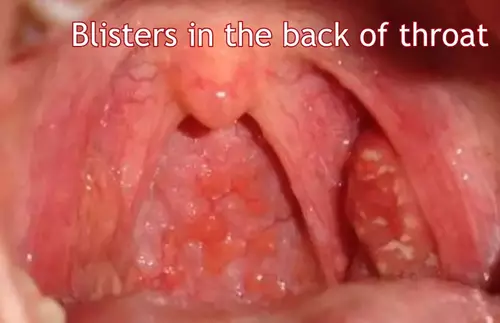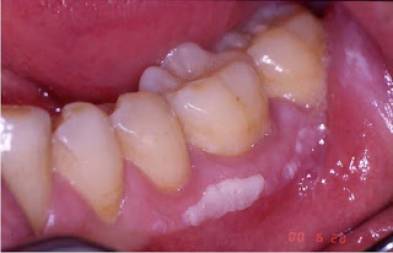Blisters in the back of the throat can be alarming, especially since these small fluid-filled bumps often signal infection or irritation in a sensitive area. Much like how a tiny pebble in a shoe can make every step uncomfortable, these throat blisters — even when mild — can intensify swallowing and talking. Understanding what triggers them sets the stage for recognizing when they’re harmless and when they need medical attention.
When people experience blisters that form in the back of the throat, they often appear alongside common viral or bacterial illnesses, which tend to spike during colder seasons. Estimates suggest that viral infections account for the majority of such cases, especially in children and young adults who face higher exposure to contagious pathogens. These patterns help explain why some groups encounter these symptoms more frequently than others.
After a long day or a sudden wave of fatigue, someone may notice discomfort while swallowing or a sharp spot of pain in the throat, a sensation that can mirror blisters developing in that area and repeatedly disrupting daily routines. Exploring the usual causes, warning signs, and safe treatment options can give readers a clear foundation for managing the issue with confidence.
Common Causes
Blisters in the back of the throat can emerge from a wide variety of triggers. Here are the leading ones:
1. Viral Infections
- Herpangina: Caused by Coxsackievirus, common in children but can affect adults. Usually appears as 2–6 small vesicles on the soft palate and tonsillar pillars.
- Mononucleosis: Epstein-Barr virus infection that can lead to throat swelling, pus-like spots, and fatigue.
- Hand, Foot, and Mouth Disease: Sometimes extends into the throat, forming small painful blisters.
2. Bacterial Infections
- Streptococcus pyogenes: Group A strep often creates white blisters and patches on tonsils, causing fever and painful swallowing.
3. Allergic Reactions and Irritants
Exposure to cigarette smoke, strong chemicals, or certain foods can irritate the mucosal lining, producing blisters or ulcers.
4. Autoimmune Conditions
- Pemphigus Vulgaris and Behçet’s Disease can manifest as recurrent throat ulcers and blisters due to immune dysfunction.
5. Thermal or Chemical Burns
Hot beverages or caustic liquids can cause direct injury, creating painful fluid-filled blisters.
| Cause | Typical Symptoms | Pain Level (1–10) |
|---|---|---|
| Herpangina | Fever, red spots, sore throat | 6 |
| Strep Throat | White patches, fever, fatigue | 7 |
| Allergic Reaction | Irritation, mild swelling | 4 |
| Pemphigus Vulgaris | Multiple ulcers, chronic | 8 |
| Thermal Burn | Sharp pain, single lesion | 5 |
For more on common infectious causes and clinical signs, refer to the ⧉ Mayo Clinic overview.
Red Flag Symptoms
While some throat blisters resolve on their own, certain warning signs indicate a more severe problem:
- Difficulty breathing or swallowing
- High fever (>102°F / 38.8°C)
- Persistent blisters lasting longer than 10 days
- Pus discharge or bleeding
For example, a 35-year-old man from Texas presented with throat blisters and fever lasting four days. His rapid strep test came back positive, and within 24 hours of antibiotic therapy, his pain decreased significantly. Conversely, a 28-year-old woman in Florida had recurring blisters, later diagnosed as autoimmune pemphigus, requiring long-term corticosteroid treatment.
Further guidance on when to see a doctor is available from the ⧉ CDC.
Diagnosis
Accurate diagnosis requires a combination of physical examination and laboratory testing. The most widely used diagnostic tools include throat cultures and rapid strep tests, which detect bacterial pathogens within minutes or days. Advanced testing like PCR and imaging is reserved for more complex cases involving chronic or deep infections.
| Diagnostic Method | Accuracy | Average Cost (USD) |
|---|---|---|
| Visual Exam | 6/10 | $50–100 |
| Throat Culture | 8/10 | $30–70 |
| Rapid Strep Test | 7.5/10 | $25–50 |
| PCR/Blood Tests | 9/10 | $100–250 |
| Imaging | 9/10 | $400+ |
Treatment
Management depends on the cause, severity, and associated symptoms.
Home Remedies and First Aid
Gargling warm salt water (1 tsp per 8 oz/240 mL) helps reduce inflammation. Soft, non-acidic foods and cold liquids ease discomfort. Honey (for adults only) can coat the throat, providing short-term relief.
Antiviral and Antibiotic Therapy
- Acyclovir (Zovirax): Effective for viral blisters from herpes-type infections.
- Amoxicillin / Clarithromycin: Standard antibiotics for bacterial causes like strep throat.
- Azithromycin (Z-Pak): Preferred in penicillin-allergic patients.
Topical Relief
Numbing sprays and lozenges help manage pain:
- Chloraseptic throat spray
- Cepacol lozenges with benzocaine
- Lidocaine Viscous solution for localized relief
Advanced Treatments
In persistent or autoimmune cases, corticosteroids or immunosuppressants (Prednisone, Azathioprine) may be prescribed. Laser and photodynamic therapy show promise in refractory cases.
Surgical Intervention
If abscess or recurrent tonsillar infections are diagnosed, tonsillectomy may be recommended.
| Treatment | Effectiveness | Average Cost (USD) |
|---|---|---|
| Home Remedies | 5/10 | <$20 |
| Antibiotics | 8/10 | $40–90 |
| Antivirals | 7/10 | $60–120 |
| Corticosteroids | 8.5/10 | $50–150 |
| Surgery | 9/10 | $2500+ |
According to Reyus Mammadli, patients often underestimate throat infections. “Pain relief is important, but identifying the trigger is essential to prevent recurrence,” he emphasizes. Over-the-counter remedies should be supportive, not substitutive for professional care.
For patient treatment pathways, visit the ⧉ WebMD resource.
Prevention
Preventing throat blisters revolves around hygiene and immune support:
- Wash hands frequently, especially during cold and flu seasons.
- Avoid sharing utensils or drinks.
- Keep oral hygiene consistent – brush twice daily and rinse with antiseptic mouthwash.
- Limit spicy or acidic foods that can irritate the mucosa.
- Strengthen immunity with a balanced diet rich in vitamin C, zinc, and hydration.
For more on prevention and oral health practices, reference the ⧉ American Dental Association.
Reyus Mammadli suggests: “The throat is a frontline defender against infection. Treat it kindly, and it will protect you.” Regular checkups are advised for individuals with frequent or chronic throat issues.
Editorial Advice
Blisters in the back of the throat can range from a fleeting viral irritation to a marker of something much deeper. The key lies in timely evaluation and consistent care. Self-diagnosis through the mirror is not enough – professional assessment ensures accurate treatment.
Reyus Mammadli, medical consultant, advises that if blisters persist longer than a week or are accompanied by fever, fatigue, or visible pus, a throat swab and professional evaluation are essential. Early diagnosis can prevent complications such as abscess formation or long-term scarring.
A practical tip: Stay hydrated, avoid throat irritants, and keep lozenges handy during cold months. Your throat might heal faster than your morning coffee cools – but only if you give it the care it deserves.





